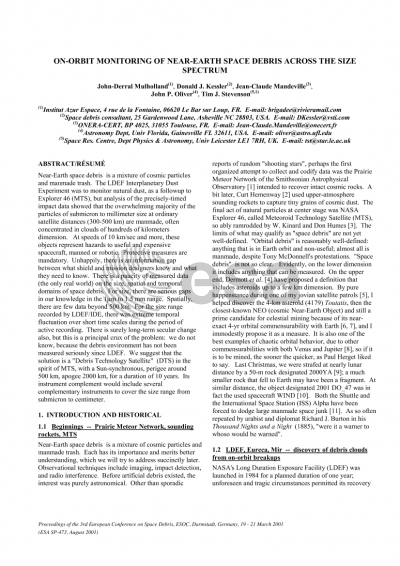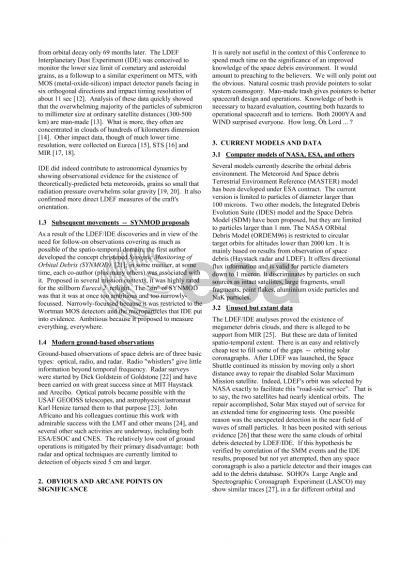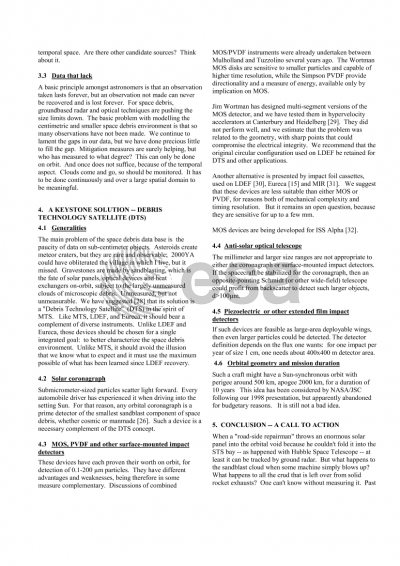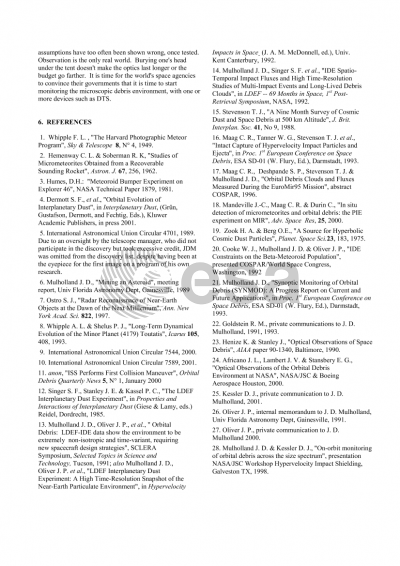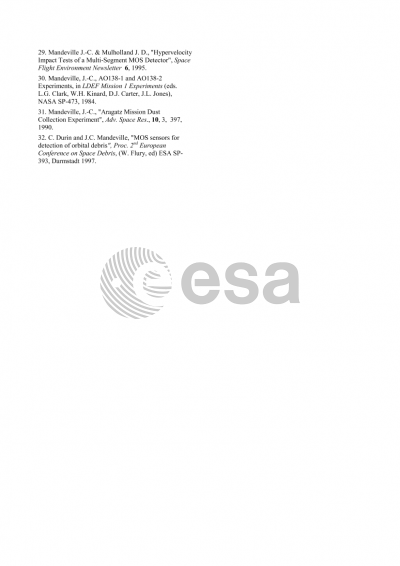Document details

Abstract
Near-Earth space debris is a mixture of cosmic particles and manmade trash. The LDEF Interplanetary Dust Experiment was to monitor natural dust, as a followup to Explorer 46 (MTS), but analysis of the precisely-timed impact data showed that the overwhelming majority of the particles of submicron to millimeter size at ordinary satellite distances (300-500 km) are manmade, often concentrated in clouds of hundreds of kilometers dimension. At speeds of 10 km/sec and more, these objects represent hazards to useful and expensive spacecraft, manned or robotic. Protective measures are mandatory. Unhappily, there is an information gap between what shield and mission designers know and what they need to know. There is a paucity of measured data (the only real world) on the size, spatial and temporal domains of space debris. For size, there are serious gaps in our knowledge in the 1 mum to 1.5 mm range. Spatially, there are few data beyond 500 km. For the size range recorded by LDEF/IDE, there was extreme temporal fluctuation over short time scales during the period of active recording. There is surely long-term secular change also, but this is a principal crux of the problem: we do not know, because the debris environment has not been measured seriously since LDEF. We suggest that the solution is a "Debris Technology Satellite" (DTS) in the spirit of MTS, with a Sun-synchronous, perigee around 500 km, apogee 2000 km, for a duration of 10 years. Its instrument complement would include several complementary instruments to cover the size range from submicron to centimeter.
Preview
